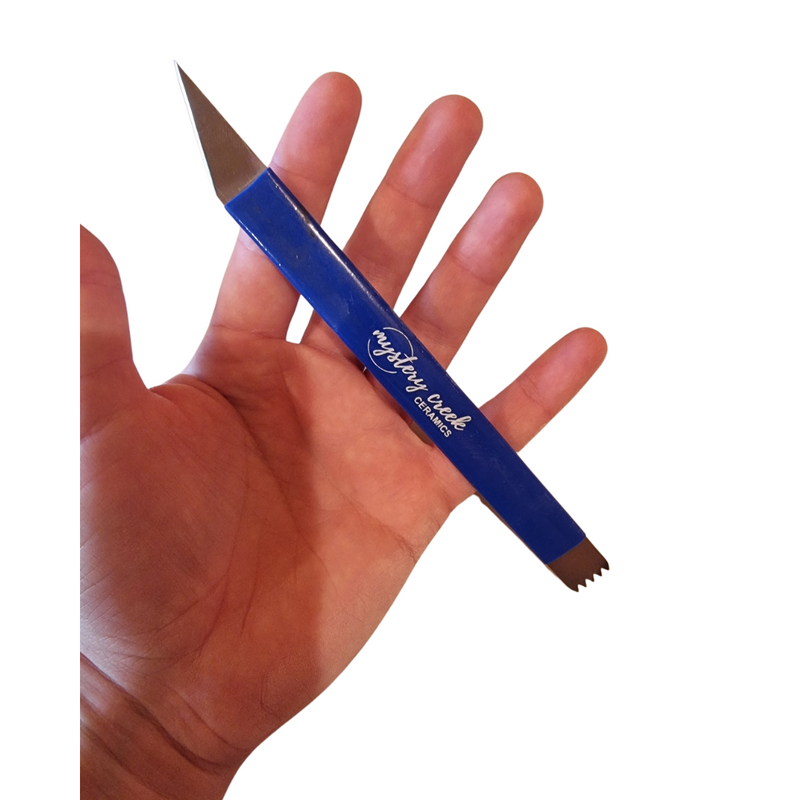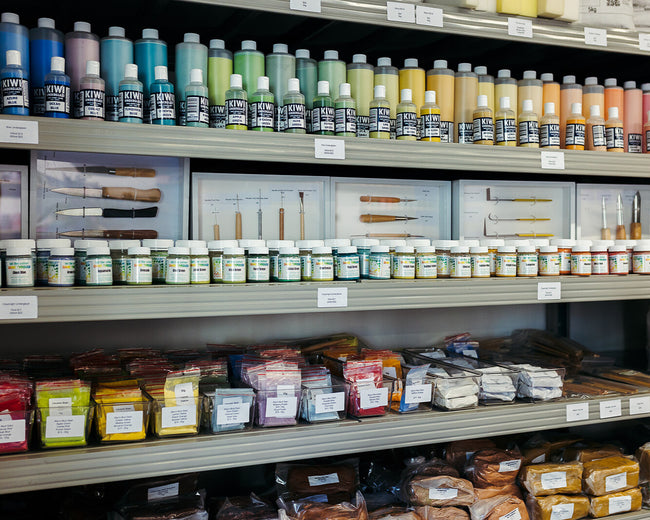When working in the studio we're constantly looking for ways to improve our production time streamline the processes used to make our ceramics. Sometimes these ideas can come from the most random and surprising places. On occasion, in very special cases we'll create customised tools to improve our production efficiency.
We're excited to share two of these tools with you in the hopes that they may help you in your own studio practice.
First up—the glaze claws.
We can't use traditional glaze tongs on our ceramics because they're made of paper clay and are quite delicate. If we try using traditional tongs, the single end of the tong punches a hole through our Nerikomi items (not a very functional mug if it has a hole in the side).
My initial thought was "ok how do I get tongs with the three pointed end on both sides?" As I considered it I realised that would be a silly tool as it would only have one grab angle, but with so many different shapes many different grab angles are necessary. After a heap more thinking I hypothesised that if the three tong end could be sperate from the tong and attached to something else...like a finger. And so, the glaze claws were born!
We were very lucky that the Mystery Creek Ceramics technical team made us a set and over four years later we're still using and loving them. They offer dexterity and ease when glazing and save us so much time. Before the glaze claws existed I would dip the items grabbing a small section of the item with my fingers and then re-dip to cover the finger mark. The glaze claws have literally halved our glazing workload.
When I was doing a lot of teaching people would ask me to show them how I glazed and I would bring out our cute glaze claws and they were wowed! So while it took me over three years to bring them to the market they have arrived and we're stoked that your glazing work can be made so much easier now too.

They're made of aluminium which is lightweight and doesn't react when coming into contact with glaze. The ring is flexible with a bit of force so you can adjust it to fit as desired. Above and below are images of my own pair, the smaller one I crushed flat so it can sit at the very end of my index finger.

They have three very small points that cause very little disruption to the glaze when dipping a pot in. When we use our glazes we do not have to touch up the claw marks at all, but this will depend on what glaze you are using.
I posted a reel of me using these claws recently and got a heap of comments about how I shouldn't be touching glaze with my hands (the glazes I was working with are safe), though you can use glaze claws with gloves.
In our studio we use glazes that are completely insoluble. This means they don't penetrate the skin barrier. So for us touching the glaze—aside from making our hands dry—touching the glaze is not an issue. Now this isn't the case for every glaze. I strongly encourage you to read the safety data sheet for all the materials you use in your studio and understand how best to handle them. Please remember everyone is different and respect how different people work in their own studios.
We hope the glaze claws might work for you and make glazing your own creations a little easier.
Secondly—we have just launched is our very own clay knife!
Clay knives are a tricky tool. They need to be sharp, but not too sharp that you cut your hands often. They rust if you don't clean them and—surprise surprise—I am not a tidy pottery person and mine were always rusting on me. If the blade is too flexy sometimes your cut can get a bit wild and... because I am always losing my scratchy tool look what we came up with!
The Mystery Creek Ceramics knife with a scratchy tool on the end.
These knives are stainless steel so no matter how much clay you leave on it, it will not rust. It has a nice plastic cover to protect your finger and it's pretty damn sharp.
We love these knives and hope you do too :)



